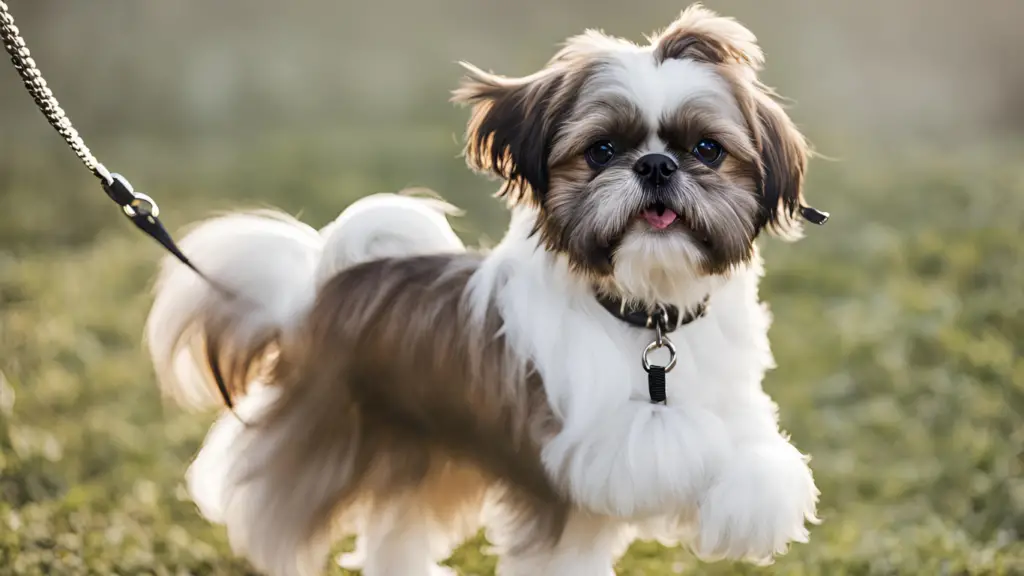
Training a Shih Tzu can be a rewarding experience, leading to a well-behaved and happy companion. These charming dogs, known for their friendly and outgoing personalities, thrive on positive interactions and structured routines. In this blog post, we will explore the best training techniques to help you raise a happy, obedient Shih Tzu. From basic commands to advanced tricks, these methods are designed to strengthen the bond between you and your furry friend.
Understanding Your Shih Tzu’s Personality

Before diving into specific training techniques, it’s important to understand the unique personality of a Shih Tzu. These dogs are known for their affectionate and playful nature, but they can also be a bit stubborn. Recognizing these traits will help you tailor your training approach.
Shih Tzus are highly social and thrive on positive reinforcement. They respond well to praise, treats, and affection, making these elements essential in your training toolbox. Patience and consistency are key, as Shih Tzus can sometimes be a bit slow to catch on to new commands.
Positive Reinforcement Training

One of the most effective methods for training a Shih Tzu is positive reinforcement. This technique involves rewarding your dog for good behavior, encouraging them to repeat the actions you desire. Rewards can include treats, verbal praise, or physical affection.
Start by identifying what motivates your Shih Tzu. For many, high-value treats such as small pieces of chicken or cheese work wonders. Whenever your dog performs a desired behavior, immediately reward them. This creates a positive association with the action and increases the likelihood of it being repeated.
Consistency is crucial in positive reinforcement training. Make sure to reward your Shih Tzu every time they perform the desired behavior, especially in the early stages of training. Gradually, you can reduce the frequency of treats, relying more on praise and affection as rewards.
Basic Commands: Sit, Stay, and Come

Teaching your Shih Tzu basic commands is the foundation of obedience training. These commands are not only practical but also help establish your role as the leader. Sit, stay, and come are three essential commands every Shih Tzu should know.
To teach sit, hold a treat close to your dog’s nose and slowly move it upward. As their head follows the treat, their bottom will naturally lower into a sitting position. Once they sit, reward them with the treat and praise. Repeat this several times until they understand the command.
For stay, start with your Shih Tzu in a sitting position. Hold your hand out, palm facing them, and say “stay” firmly. Take a step back and, if they stay in place, reward them with a treat. Gradually increase the distance and duration of the stay command.
The come command is crucial for safety. Use a long leash in an open area and gently pull your dog towards you while saying “come.” When they reach you, reward them with a treat and praise. Practice this command regularly to ensure they respond promptly.
Crate Training for Security and Comfort

Crate training is an invaluable tool for housebreaking and providing your Shih Tzu with a sense of security. A crate serves as a safe space for your dog, mimicking a den-like environment where they can relax and feel secure.
Introduce the crate gradually by placing treats and toys inside to create a positive association. Encourage your Shih Tzu to explore the crate on their own, without forcing them inside. Once they are comfortable, you can start closing the door for short periods while staying nearby.
Crate training is particularly effective for housebreaking. Dogs naturally avoid soiling their sleeping area, so the crate helps teach them bladder control. Be sure to take your Shih Tzu outside frequently, especially after meals and naps, to reinforce good bathroom habits.
Socialization for a Well-Rounded Dog

Socialization is a critical aspect of training that helps your Shih Tzu develop into a confident and well-rounded dog. Early exposure to different people, animals, and environments reduces the risk of behavioral issues and anxiety.
Start socializing your Shih Tzu at a young age. Arrange playdates with other dogs, take them to dog-friendly parks, and introduce them to various sights and sounds. Positive experiences during these interactions will build your dog’s confidence and improve their overall behavior.
Regular socialization prevents fear-based reactions and helps your Shih Tzu become more adaptable. Ensure each new experience is positive by offering treats and praise, reinforcing their good behavior in diverse situations.
Advanced Tricks and Commands

Once your Shih Tzu has mastered basic commands, you can move on to advanced tricks and commands to keep their mind engaged. Teaching advanced tricks not only enhances their obedience but also strengthens the bond between you and your dog.
Some fun tricks to teach your Shih Tzu include roll over, play dead, and fetch. Use the same positive reinforcement techniques, breaking each trick down into small, manageable steps. Be patient and celebrate each milestone with rewards and praise.
Advanced commands such as heel and leave it are also valuable for maintaining control and safety during walks and interactions with other dogs. Training sessions for advanced commands should be short and engaging to keep your Shih Tzu’s attention focused.
Dealing with Stubbornness

Shih Tzus are known for their occasional stubborn streak. If your dog seems resistant to training, it’s important to remain patient and consistent. Avoid harsh punishments, as they can damage the trust between you and your dog.
Instead, try to understand the reason behind their stubbornness. Are they tired, distracted, or not motivated by the rewards you’re offering? Adjust your training sessions accordingly, ensuring they are enjoyable and suited to your dog’s needs.
If you encounter persistent challenges, consider enrolling in a professional training class. A qualified trainer can provide personalized guidance and techniques to overcome specific issues and ensure your Shih Tzu’s training progresses smoothly.
Maintaining a Positive Training Environment

Creating a positive training environment is essential for your Shih Tzu’s success. Choose a quiet, distraction-free area for training sessions, especially when introducing new commands. Keep sessions short and engaging to prevent your dog from becoming bored or frustrated.
End each session on a positive note by celebrating your Shih Tzu’s progress, regardless of how small. This reinforces their good behavior and leaves them looking forward to future training sessions. Remember, a happy and engaged dog is more likely to respond positively to training.
Health and Nutrition for Optimal Training

A healthy Shih Tzu is more likely to excel in training. Ensure your dog receives a balanced diet, regular exercise, and proper veterinary care. A well-nourished and fit dog will have the energy and focus needed for effective training sessions.
Consult your veterinarian for dietary recommendations and address any health concerns promptly. Regular check-ups and preventive care keep your Shih Tzu in top shape, making training a more enjoyable and productive experience for both of you.
Incorporating Play into Training

Incorporating play into training sessions makes learning fun and reinforces positive behaviors. Use interactive toys, games, and agility exercises to keep your Shih Tzu mentally and physically stimulated. Playful training sessions strengthen the bond between you and your dog while promoting their overall well-being.
Conclusion
Training a Shih Tzu requires patience, consistency, and a positive approach. By understanding your dog’s unique personality and using techniques such as positive reinforcement, basic commands, and socialization, you can raise a happy, obedient Shih Tzu. Remember to create a positive training environment, address any stubbornness with patience, and maintain your dog’s health and nutrition. With these strategies, you’ll build a strong bond with your Shih Tzu and enjoy a lifetime of companionship and joy.


